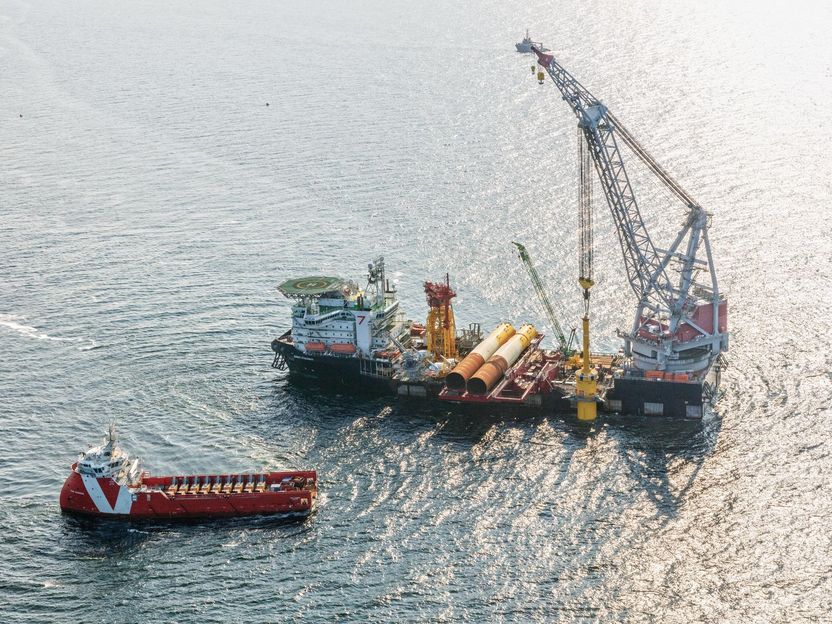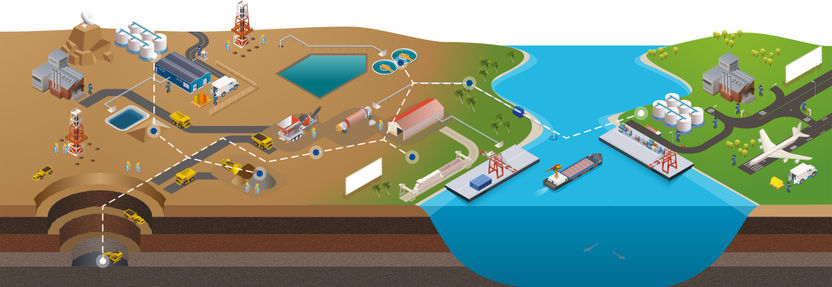BASF confirms ambitious climate targets and takes steps to reduce product-related emissions
25 percent reduction of CO2 emissions by 2030 compared with 2018 and net zero by 20501 targeted
One year after its initial announcement, BASF has reaffirmed its ambitious climate targets. In an update for investors and financial analysts on its transformation roadmap BASF confirmed that by 2030 it aims to reduce its greenhouse gas emissions by 25 percent compared with 2018 and is maintaining its goal of net zero emissions globally by 2050. On its path to reducing global emissions to 16.4 million metric tons by 2030, BASF is publishing an annual CO2 emissions forecast for BASF Group as part of its outlook with a corridor of plus or minus 0.5 million metric tons.

Construction work for the Hollandse Kust Zuid offshore wind farm in the North Sea is progressing.
Flying Focus BV
“There is a brutal war raging in Europe with far-reaching consequences for both people and the economy. Nevertheless, we must not lose sight of the greatest global challenge of our time – climate change,” said Dr. Martin Brudermüller, Chairman of the Board of Executive Directors of BASF SE. “Across BASF, we are working intensively to implement a large number of projects to further reduce our CO2 emissions significantly and achieve our ambitious climate targets. By cooperating with suppliers of raw materials we are also taking steps to reduce our product-related emissions. In this way, we are driving forward our transformation and supporting customers in their efforts to reduce emissions in their product portfolios,” he added.
Renewable energy as a main driver of emission reduction
In 2021, BASF reduced CO2 emissions by around 3 percent compared with 2020 despite significantly higher production volumes. To a large extent this was due to the increased use of renewable energy. Switching power to renewable energy will be the main driver of emission reduction until 2025. In 2021, renewables accounted for 16 percent of BASF Group’s global power demand. By 2030, the company projects that 100 percent of its 2021 global power demand will be obtained from renewable sources.
To cover its demand for renewable energy, BASF is pursuing a make-and-buy strategy. This includes investing in own renewable power assets and purchasing green power from third parties. In 2021, BASF purchased a stake in Vattenfall’s wind farm Hollandse Kust Zuid (HKZ). Once fully operational, it will be the world’s largest offshore wind farm with a total installed capacity of 1.5 gigawatts. The project is expected to become fully operational in 2023. Furthermore, BASF has signed 25-year power purchase agreements (PPAs) with ENGIE and Ørsted for the supply of significant amounts of renewable electricity from wind and solar power in Europe. In the United States, BASF has concluded long-term supply contracts for wind and solar power for its Freeport and Pasadena sites. In China, BASF has signed agreements with suppliers for the purchase of renewable power for its new Verbund site in Zhanjiang.
Most read news
Organizations
Other news from the department business & finance

Get the chemical industry in your inbox
By submitting this form you agree that LUMITOS AG will send you the newsletter(s) selected above by email. Your data will not be passed on to third parties. Your data will be stored and processed in accordance with our data protection regulations. LUMITOS may contact you by email for the purpose of advertising or market and opinion surveys. You can revoke your consent at any time without giving reasons to LUMITOS AG, Ernst-Augustin-Str. 2, 12489 Berlin, Germany or by e-mail at revoke@lumitos.com with effect for the future. In addition, each email contains a link to unsubscribe from the corresponding newsletter.
Most read news
More news from our other portals
Last viewed contents

BASF invests in industrial artificial intelligence company - Additional partnership to bring together expertise in mineral processing, ore beneficiation chemistry and industrial AI technology

























































